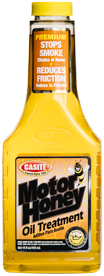How to Fix a Smoking Exhaust
Smoke coming out of your car’s exhaust? That’s not good.
It’s not good for the environment, and it’s not good for your public image (you don’t want to be that guy on the highway). But mostly, it’s not good for your car. Smoke in the exhaust means that something is wrong with your engine, and that something can be a big problem (or turn into a big one, if left unchecked).
Luckily, you might be able to fix the problem on your own.


